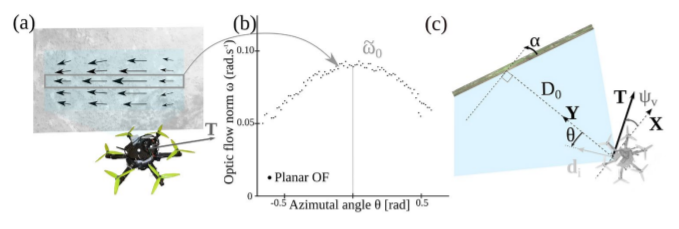Journal of Bionic Engineering (2025) 22:1143–1166https://doi.org/10.1007/s42235-025-00677-w
Netting and Background Distinction with In-flight Optic Flow
Xavier Dani1 · Romain Raffin2 · Thibaut Raharijaona3 · Franck Ruffier1
1 ISM, Aix-Marseille Université, CNRS, 13009 Marseille, France
2 LIB, EA 7534, University of Burgundy, 21078 Dijon, France
3 University of Lorraine, LCFC, Arts et Métiers Institute of Technology, HESAM Université, 57000 Metz, France
Abstract
Web-like obstacles, such as safety nets, represent a unique hazard for drones, and especially UAVs (Unmanned Aerial Vehicles). Fencing and netting are particularly difficult to distinguish from the background using either computer vision, lidar and sonar. In contrast, animals such as flying insects may detect these web-like obstacles using Optic Flow (OF), and more precisely motion parallax. A netting-avoidance solution was proposed using a OF-based detection method. The netting detection method was based on a signature defined by the shape of the OF magnitude across the visual field. We established that the OF shape depends on the orientation of the netting in relation to the hexarotor’s movement. This paper demonstrates netting detection in real-world experiments, according to any direction flight made by the UAV along the net. The proposed NOWA method (which stands for Netting Optical floW-based distinction Algorithm) separates the OF signatures belonging to these different surfaces -netting or background- whatever their orientations. By extracting the OF signatures of these different surfaces and separating them, the proposed visual method can estimate their relative locations and orientations. In a robotic simulations, the multirotor explores and navigates automatically using this netting detection method, using saccades to avoid obstacles. In the simulations, these saccades are also used to simplify netting detection by orienting itself systematically parallel to these planes, a behavior reminiscent of flying insects.
Keywords Safety-nets · UAV (Unmanned aerial vehicle) · Optic flow · Autonomous exploration · Multirotors

Copyright © 2025 International Society of Bionic Engineering All Rights Reserved
吉ICP备11002416号-1









